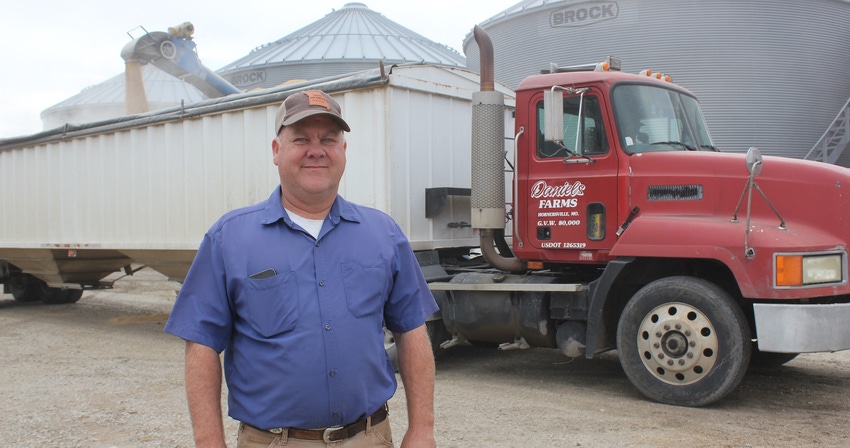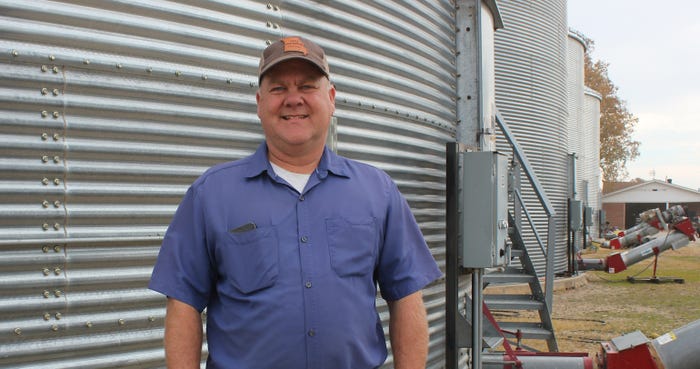
“If I could have a year like this every year I would take it,” said Missouri farmer Rance Daniels as he reflected on the 2021 rice crop. Daniels and his wife, Robin, run the 3,000-acre operation near Rives, Missouri, where they grow rice and soybeans. After 25 seasons of full-time farming, Daniels knows years like this one don’t come along often.
“We had the best crop we ever had — for rice and soybeans, both,” he said. “My 17-year-old son, Chase, helps with combining, and I told him he better mark those yields down, because it may be a long time before you have a year this good.”
USDA estimates place Missouri rice yields at 8,100 pounds per acre (or 180 bu/a). That’s up 850 pounds per acre from 2020 and a new state record.
While many Midsouth rice growers considered 2021 one of the most challenging years ever, according to Daniels, the Missouri Delta received timely rains and low pest pressure.
“This is about as close to perfect as you can get this year,” he said.
As good as growing conditions were on the Daniels Farm this year, there are challenges ahead that have Rance concerned. Milling yields have been subpar across the Midsouth. Rising input costs and availability continue to worry farmers as they plan for 2022. We sat down with Daniels to discuss the 2021 crop and what he anticipates for rice production in 2022.
Row rice a game changer
Daniels grows zero grade and row rice. He said he began experimenting with row rice eight years ago, and since then, has continued to expand his those acres. He hasn’t had a levee on his farm in four years.
“Row rice is a game changer,” he said. “It’s easier. It makes rotation easier. I won’t go back the other way.”
Daniels said row rice keeps farm ground in better shape and has allowed him to incorporate no-till practices.
“I have some fields where we haven’t done anything besides plowing the middle where the water will run through it,” he said. “We hipped them up five years ago. Planted soybeans in the beds. The next year we no-tilled the rice into the bean stubble, and the following year we no-tilled the beans into the same beds.”
“Row rice cuts out the trips across the field. Our ground is heavy, Sharkey clay. The less you can work it the better off you are. It would take 8 to 10 trips in this heavy clay to pull a levee up. You can afford to make a little less yield and still come out ahead because of fewer tillage pass savings,” he continued.
Currently 30% of Missouri rice acres are furrow irrigated, or row rice, according to Justin Chlapecka, the newly appointed Rice Extension Specialist with the University of Missouri. While growers like Daniels have made row rice pencil out, thanks to reduced field work, Chlapecka said closing the yield gap in row rice will be a priority in his research program.
“There are several challenges to furrow irrigated rice that take a couple bushels here and there. They add up to a 10-20 bushel yield gap,” Chlapecka said. “We’re going to be looking at managing billbugs, weed research, fertility and water management. It’s going to be a multi-faceted approach, but I think we can close the yield gap.”
While Chlapecka believes most row rice producers have a handle on nitrogen management, more needs to be learned about P and K management.
“We know we’re taking up less P and K in the top of the field, where there’s not a flood standing,” he said. “I think the issue is whether we can make up the gap, or if the gap is not worth the effort to close financially.”

Milling yields
Across the Midsouth, there have been reports of subpar milling yields. Daniels said he has seen milling yields across the board.
“Some was average. Some was not very good. What I hauled out of the field was off quite a bit,” he said.
“It’s hard to know what’s causing this. In one situation I had the same variety on the same farm, planted within a day of each other and the milling would go from decent to terrible. You can’t attribute that to weather.
It’s unfortunate that the record yields have been eroded by poor grade and milling. Extension specialists have struggled to identify an exact cause.
“That’s the million-dollar question,” Chlapecka said. “It seems like our rice was sitting at 20% moisture for a long time. Then we had a cold front come through and the rice got dry all of a sudden and dropped to 12% moisture. A lot of harvest stacked up and we couldn’t to it timely for optimal milling yield.”
Finding cost savings
New for next year, Daniels said he plans to invest in the water saving technologies, including soil moisture sensors.
“I think maximizing water use efficiency is where you’re going to save money in the future,” he said. “And looking at next year’s input prices, it looks like we need to find new ways to save.”

When we visited Daniels in early December, he was already pricing chemicals for the 2022 season — a chore he typically does after the first of the new year.
“This year I’m pricing chemicals now, and I want them in my shop. That way I know I have them,” he said. “I’m not the only one doing this. Everyone is wanting prices and products now because we’re worried about product shortages.”
Despite worries on input prices and availability, Daniels doesn’t plan to make changes to his crop mix.
“I have a rotation that we stick to,” he said. “With prices as they are, I will still be able to make money, although margins will not be as good as this year.”
"But it has been my experience that if you chase the numbers, it doesn’t end up panning out,” he said.
Rice saved farms
Rice does not have a long history in southern Dunklin County where Daniels farms, but he said the crop saved agriculture in his part of the world.
“We grew cotton up to 1997, but this is not cotton ground,” he said. “If it wasn’t for rice, everyone in this area would be doing something else. Rice is what this ground was suited for and really saved the farming community in southern Dunklin County.
His family planted their first rice crop in 1994.
“Lots of people grew rice one year and said if they had to play in this mud they weren’t doing it. But in the late 90s early 2000s rice really took off and now rice is the major crop.”
Rice production also encouraged duck hunting in the area. Like many neighboring farmers, Daniels leases duck pits that have provided a good source of extra income in the winter.
“Fertilizer prices may pull some people away from rice in 2022, but I don’t see our acres going down significantly. Producers in our area want to grow rice.”
About the Author(s)
You May Also Like






